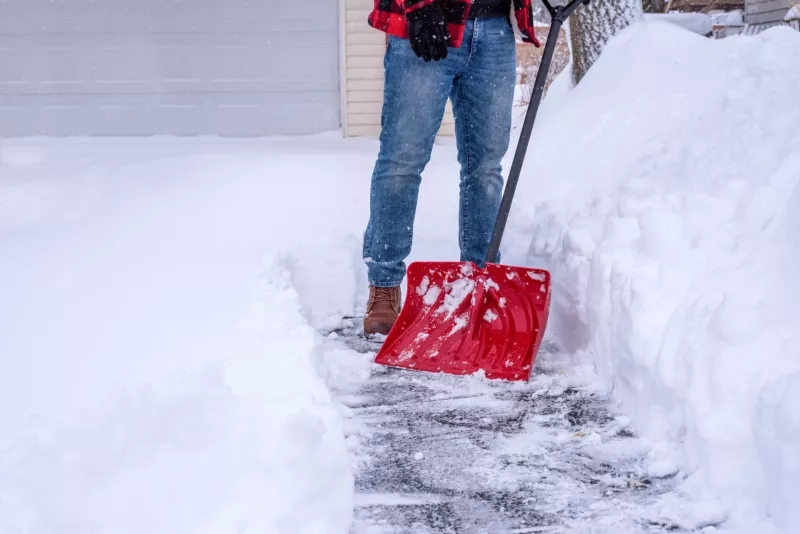
How to avoid injury when shovelling your driveway and sidewalk
2 Minute Read
Snow during a Canadian winter is one of life's certainties. A thick layer of the white stuff makes for a pretty scene but also treacherous walking. In most municipalities, homeowners and occupants must remove snow and ice from sidewalks, paths and driveways on or near their property following a snowfall.* Though few of us relish the task, shovelling snow is easier and safer if you use the right gear and the correct technique.
Dress the part
Wear layers to stay warm and dry, but avoid bulking up so much that you restrict your range of movement. Go with the basics of a hat, gloves with enough padding to prevent blisters and sturdy boots with good tread.
Stretch it out
Shovelling is exercise, so it's important to warm up to the task. Take a walk around the block, and then do some light stretches, focusing on your arms, legs and back.
Select (and prep) your shovel
The handle should be ergonomically curved and long enough that you don't have to bend much while using it. And favour a smaller blade size: pushing and lifting lighter loads reduces your chance of injury. Spray the blade with silicon lubricant to prevent snow from sticking to it.
Get a grip
Protect against a nasty fall by spreading salt or sand on slippery spots you may have to traverse or stand on while shovelling.
Focus on posture
Push the snow as far to the driveway's edge as possible before lifting it into a pile. Keep your back straight as you push. Periodically switch between shovelling right- and left-handed to avoid a one-sided workout.
Lift straight
Stand with feet shoulder-width apart, bend at the knees, and scoop up small-to-medium amounts of snow. Keep the shovel blade close to you to minimize back strain. Do not twist your body when lifting and heaving snow.
Take breaks and rehydrate
In frigid temperatures, moisture is being rapidly pulled from your body, but you may not notice the signs of dehydration. Allow yourself the occasional break for a drink of water or hot cocoa.
Shovel in stages
Deeper—and especially wetter— snow means heavier loads. Instead of shovelling it all at once, skim half off the top, then do a second pass for the rest.
Pile it up
If space allows, throw snow farther from your driveway at the start of the job, then dump it progressively closer. As you grow more tired from shovelling, you'll have a shorter distance to heave the snow.
Protect your property with these snow-smart tips
- Shovel snow away from your home's foundation to guard against seepage with the spring thaw.
- Keep furnace and dryer vents clear. Blocked vents can be a fire hazard and can cause carbon monoxide buildup in your home.
- If you can, clear snow at least a metre from the edge of your roof to reduce the risk of ice damming and leaks. Take care not to damage shingles and flashing, and if you use a ladder, always have a spotter.
- To de-ice vehicle windows, mix two parts of isopropyl rubbing alcohol with one part of water. Spray it on, wait a minute for the ice to melt, and then wipe it dry with an old towel.
Check your community's bylaws to find out about specific snow-clearing requirements.



